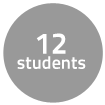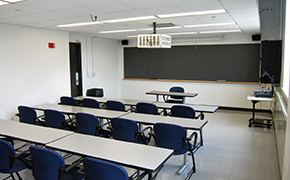Instructor Insights pages are part of the OCW Educator initiative, which seeks to enhance the value of OCW for educators.
Course Overview
This page focuses on the course 16.55 Ionized Gases as it was taught by associate Professor Paulo Lozano and Professor Emeritus Manuel Martinez-Sanchez in Fall 2014.
This course focused on the properties and behavior of ionized gases, or plasmas, including equilibrium, kinetic theory and gas surface interactions. Also covered was radiation in plasmas and diagnostics.
Course Outcomes
Course Goals for Students
- Understand how energy conversion, plasma propulsion, and gas lasers impact the properties and behavior of low-temperature plasmas.
- Describe gas surface interactions, radiation in plasmas, and the ways in which these phenomena relate to diagnostics.
- Apply the equilibrium and kinetic theory of ionized gases, along with an understanding of other theorems and their inter-relationships, to solve problems relating to low-temperature plasmas.
Possibilities for Further Study/Careers
This course prepares students for graduate study in the area of space propulsion engineering.
Curriculum Information
Prerequisites
Requirements Satisfied
16.55 can be applied toward a graduate degree in  Space Propulsion Engineering (PDF) or
Space Propulsion Engineering (PDF) or  Space Systems Engineering (PDF) from the Department of Aeronautics and Astronautics.
Space Systems Engineering (PDF) from the Department of Aeronautics and Astronautics.
Offered
Every other fall semester
Assessment
The students' grades were based on the following activities:
 50% Homework assignments (5)
50% Homework assignments (5) 50% Quizzes (2)
50% Quizzes (2)Student Information

Breakdown by Year
Graduate students
Breakdown by Major
Aeronautics and Astronautics graduate students in  Space Propulsion (PDF) or
Space Propulsion (PDF) or  Space Systems Engineering (PDF) degree programs.
Space Systems Engineering (PDF) degree programs.
During an average week, students were expected to spend 12 hours on the course, roughly divided as follows:
In Class
- Met 2 times per week for 1.5 hours per session; 25 sessions; mandatory attendance.
- Two additional sessions were used for quizzes.
Out of Class
- Complete assigned readings.
- Complete 5 homework assignments.
Semester Breakdown
| WEEK | M | T | W | Th | F |
|---|---|---|---|---|---|
| 1 |  |  |  |  |  |
| 2 |  |  |  |  |  |
| 3 |  |  |  |  |  |
| 4 |  |  |  |  |  |
| 5 |  |  |  |  |  |
| 6 |  |  |  |  |  |
| 7 |  |  |  |  |  |
| 8 |  |  |  |  |  |
| 9 |  |  |  |  |  |
| 10 |  |  |  |  |  |
| 11 |  |  |  |  |  |
| 12 |  |  |  |  |  |
| 13 |  |  |  |  |  |
| 14 |  |  |  |  |  |
| 15 |  |  |  |  |  |
| 16 |  |  |  |  |  |
 No classes throughout MIT
No classes throughout MIT Lecture session
Lecture session Exam
Exam No class session scheduled
No class session scheduled Assignment due date
Assignment due date

 Room 1 of 1
Room 1 of 1 